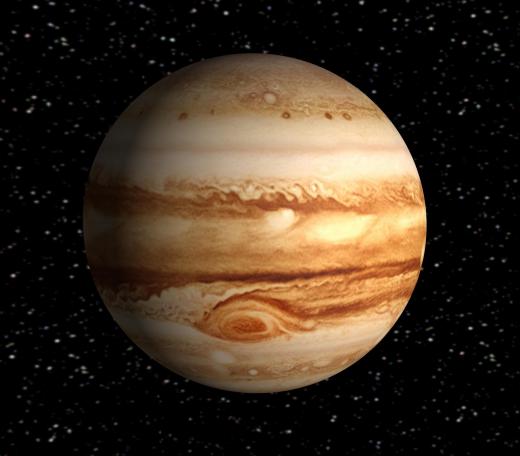What is Escape Velocity?
 Michael Anissimov
Michael Anissimov
Escape velocity is the velocity at which a body must travel before it breaks free of the gravitational pull of a celestial body. It varies widely based on the body's mass. The Earth's escape velocity is 11.186 km/s (25,022 mph or about Mach 37), which can only reached by powerful booster rockets. By comparison, the Space Shuttle's top speed is about 7.6 km/sec, enough to reach Low Earth Orbit but not escape the Earth's gravitational pull entirely.
The escape velocity on Mars' moon Phobos is about 11 m/s, or 25 mph. The body's mean diameter is 11 km (6.8 mi). Its smaller cousin, Demos, with a mean diameter of 6 km (3.7 mi), has an escape velocity of only 6.9 m/s (15 mph), meaning that you could probably jump right off it if you tried hard enough. The gravitational force decreases with the square of the distance, meaning that if a certain distance away from the body the gravity is only half that on the surface, at twice that distance the gravity will be four times less, eight times less, and so on.

Jupiter, the King of the Planets, has an escape velocity of 59.5 km/s (133,100 mph), about 5 1/2 times our own. Despite the size of Jupiter, the velocity is lower than one might think, due to the low density of the planet. Regardless, it would require some powerful rockets to accelerate a payload away from Jupiter's gravitational field.
Perhaps the most famous escape velocity is that of a black hole's — equal to light. Because of its tremendous mass concentrated into a tiny area, nothing can beat the escape velocity of a black hole. The only reasons we know they are there is that they are predicted by stellar evolution models, and infalling gases get superheated, sending out heat and light. It is also known that black holes slowly evaporate through something called Hawking radiation which deals with quantum tunneling effects.

The reason we are so stuck on Earth today is because of its high escape velocity. To spread to the rest of the Solar System and eventually the universe, we must conquer our own gravity cheaply and reliably. This has not yet been achieved. Solutions may involve maglev-assist launches, huge electromagnetic rail guns, or even a space beanstalk.
AS FEATURED ON:
AS FEATURED ON:













Discussion Comments
What about a superfuel that has not yet been discovered that would allow us to 1) leave this planet and 2) take said fuel with us to get to Mars, for example? This would allow us to return to earth, which we already know how to do.
First, thanks for the answer. Here, an object with sufficient constant acceleration forces can move away from a body at any speed. True, but the object should travel perpendicularly to the body, not horizontal. Is this right? If yes, 'escape velocity' applies only to objects which have a circular motion, right?
I have a question: Earth's escape velocity is 11.186 km/s at what altitude?
There is some erroneous information here.
First to answer the above questions. Yes, Required Escape Velocity is smaller farther away from the body.
Second, an object with sufficient constant accelerative forces can move away from a body at any speed. "Escape Velocity" applies better to a cannonball fired from earths surface than to a rocket. Spaceships frequently leave earths orbit at much slower speeds than 25k mph. Yes if a ladder could be built from earth to the moon, it would be theoretically possible for a person to climb it at a miniscule fraction of escape velocity. This ignores things like life support, but who needs to breathe, right?
Escape velocity at black holes is many times higher than the velocity of light. Light does not emit from the black holes. Gravity waves emanate from the black holes. At the time of such emission the speed of gravity wave should be also much higher than the speed of light ‘c’. In fact light is the manifestation of action of gravitation force at the time of birth of a star.
A.K. Satsangi
Could you climb a ladder to the moon? I think so, but you would be weightless at some point as you neared the destination, and would then have to flip yourself to climb "down" to the moon.
Also, you would obviously need a space suit or something, and the ladder would have to be stable, etc.
There are plenty of ideas out there about space elevators/escalator/tethers to the moon or even just to an orbital station. It remains a plausible way we might travel in the future. Though I'm more interested in this article's reference to "maglev-assist launchers".
Does the energy needed to escape earths gravity diminish the further you get from the surface. Also, how much of a rocket's energy is used getting the weight of the fuel of the ground? Could you, in theory, climb a ladder to the moon without the need to reach escape velocity?
Post your comments